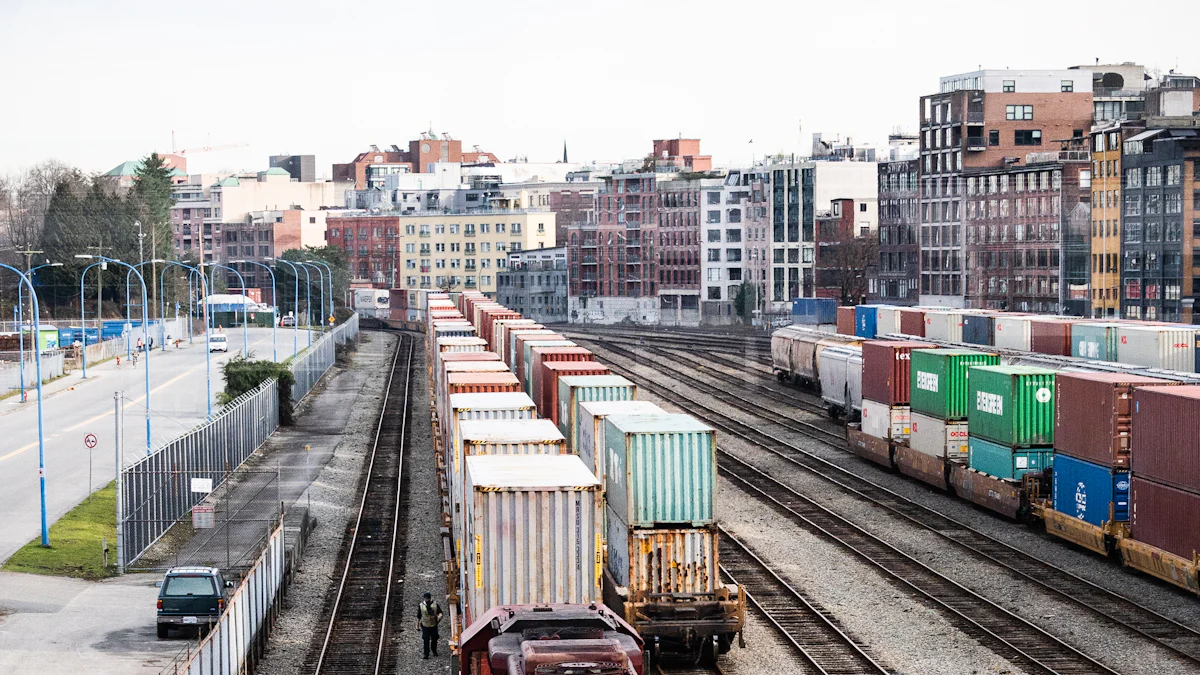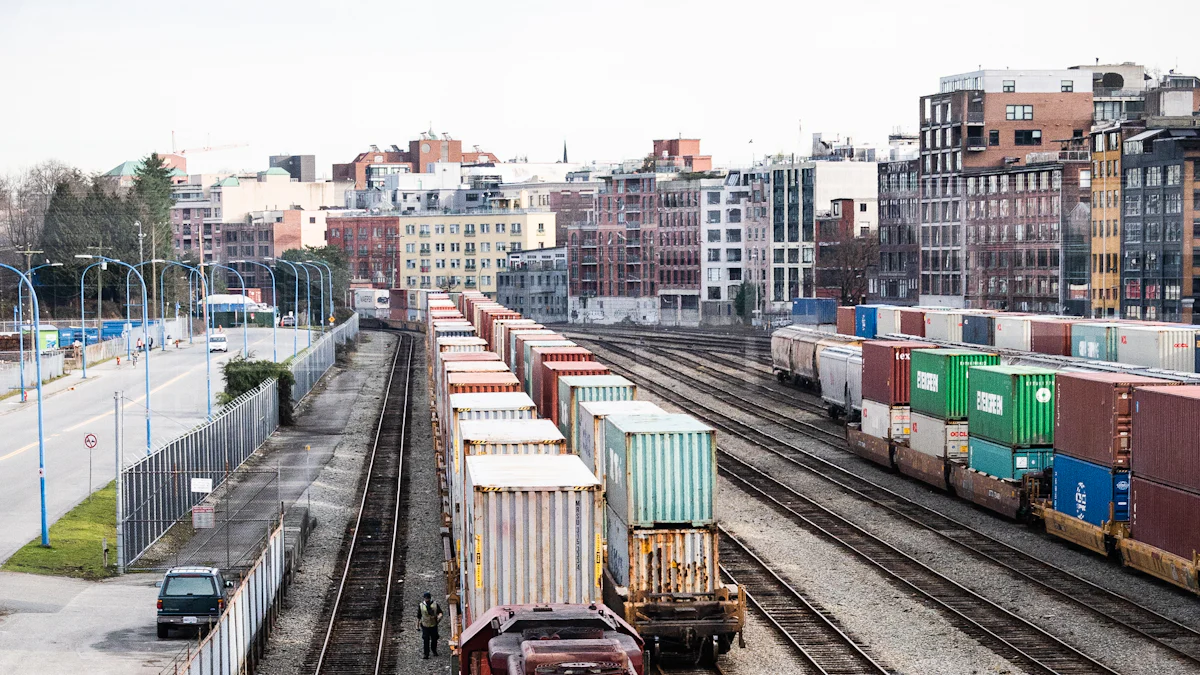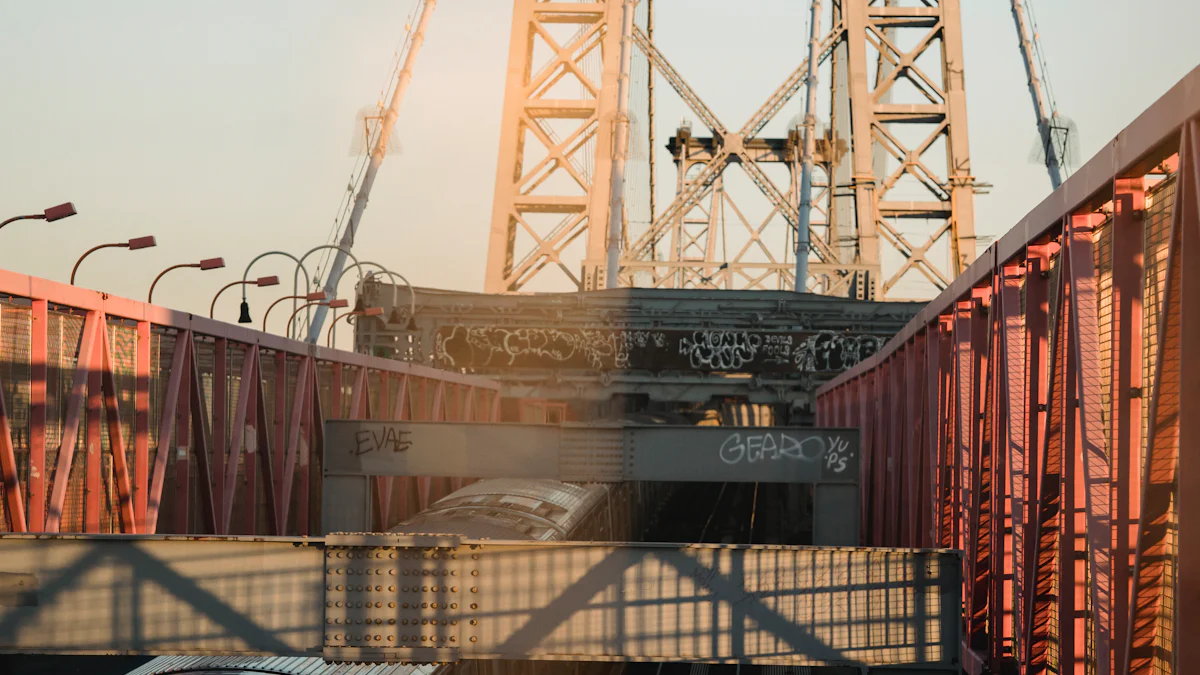Building a Railway Logistics Park Information System from Scratch

Rail transportation plays a crucial role in logistics. Railways move vast amounts of freight efficiently and cost-effectively. In 2018, rail freight volumes in the United States reached 2.53 trillion tonne-kilometers. Railway logistics parks enhance this efficiency by providing centralized hubs for distribution. These parks use intermodal hubs to connect rail with trucking and ocean carriers. An information system in a Railway Logistics Park ensures smooth operations and real-time data management. Building such a system from scratch aims to meet specific operational needs and improve overall logistics performance.
Understanding the Basics
What is a Railway Logistics Park?
Definition and Components
A Railway Logistics Park serves as a centralized hub for freight distribution. These parks integrate rail, truck, and ocean carrier services. The main components include intermodal terminals, warehousing facilities, and storage yards. Intermodal terminals handle the transfer of goods between different transportation modes. Warehousing facilities store goods temporarily. Storage yards accommodate containers and other freight.
Role in the Supply Chain
Railway Logistics Parks play a crucial role in the supply chain. These parks enhance connectivity between various transportation modes. This connectivity reduces transit times and costs. Efficient handling of freight ensures timely deliveries. Businesses benefit from improved logistics performance. These parks also support large-scale distribution operations.
Importance of an Information System
Enhancing Efficiency
An information system in a Railway Logistics Park boosts efficiency. Automated processes reduce manual labor. This automation speeds up operations and minimizes errors. Real-time tracking of shipments enhances visibility. Managers can make informed decisions quickly. This leads to better resource allocation and reduced downtime.
Real-time Data Management
Real-time data management is vital for smooth operations. An information system provides up-to-date information on freight status. This data helps in monitoring and managing inventory levels. Accurate data ensures optimal use of storage space. Real-time updates improve coordination among different transportation modes. This results in seamless and efficient logistics operations.
Site Selection and Initial Planning

Criteria for Site Selection
Proximity to Rail Networks
Choosing the right location for a Railway Logistics Park starts with proximity to rail networks. Rail access is crucial for efficient freight movement. Close proximity to major rail lines reduces transit times. This also lowers transportation costs. A well-connected rail network enhances the park's appeal to businesses. Companies can benefit from streamlined logistics operations.
Accessibility and Infrastructure
Accessibility plays a significant role in site selection. The site must be easily accessible by road. Good road connectivity ensures smooth movement of trucks. This is essential for last-mile delivery. The presence of nearby highways or major roads is a plus. Infrastructure within the site is equally important. Adequate utilities like electricity, water, and communication networks are necessary. These facilities support the day-to-day operations of the logistics park.
Initial Planning Steps
Feasibility Studies
Feasibility studies form the backbone of initial planning. These studies assess the viability of the proposed site. Experts analyze various factors such as market demand and financial projections. Environmental impact assessments are also conducted. These evaluations help in understanding potential challenges. Feasibility studies provide a clear picture of the project's prospects. Decision-makers can make informed choices based on these findings.
Stakeholder Engagement
Engaging stakeholders early in the planning process is vital. Stakeholders include local authorities, businesses, and community members. Their input helps in shaping the project to meet diverse needs. Regular meetings and consultations foster transparency. This builds trust and cooperation among all parties involved. Effective stakeholder engagement leads to smoother project execution. It also ensures that the Railway Logistics Park aligns with community interests.
Communication with Railroads
Regulatory Considerations
Compliance with Rail Regulations
Compliance with rail regulations is non-negotiable. Each railroad company operates under strict guidelines set by regulatory bodies. Familiarize yourself with these regulations to avoid potential legal issues. For instance, the Federal Railroad Administration (FRA) oversees safety standards and operational protocols. Adhering to these regulations ensures smooth operations and minimizes risks. Regular audits and inspections help maintain compliance. Keep detailed records of all regulatory requirements and updates. This proactive approach prevents any disruptions in logistics operations.
Safety Standards
Safety standards are paramount in railway logistics. Railroads prioritize safety to protect personnel, cargo, and infrastructure. Implement comprehensive safety protocols within the Railway Logistics Park. Conduct regular training sessions for staff on safety procedures. Ensure that all equipment and facilities meet industry safety standards. Collaborate with railroads to develop joint safety initiatives. For example, CSX provides a dedicated emergency contact number at 1-800-232-0144. Use such resources to address safety concerns promptly. A strong safety culture enhances the overall reliability and reputation of the logistics park.
Assessing Operational Needs
Identifying Key Operations
Freight Handling
Freight handling forms the backbone of a Railway Logistics Park. Workers need to load and unload goods efficiently. Proper equipment like cranes and forklifts speeds up this process. Skilled operators ensure safe and quick handling. Efficient freight handling reduces delays and minimizes damage to goods. The logistics park must have clear procedures for handling different types of cargo. This ensures smooth operations and customer satisfaction.
Storage and Warehousing
Storage and warehousing are crucial components of a Railway Logistics Park. Warehouses provide temporary storage for goods before further distribution. Proper organization within warehouses maximizes space utilization. Advanced inventory management systems track goods in real-time. This helps in reducing errors and improving efficiency. Climate-controlled storage options protect sensitive items. Security measures like surveillance cameras and access controls safeguard stored goods. Efficient storage and warehousing enhance the overall performance of the logistics park.
Technology Requirements
Hardware and Software
The right hardware and software are essential for a Railway Logistics Park. Computers, servers, and networking equipment form the hardware backbone. Reliable hardware ensures smooth operation of the information system. Specialized software manages various aspects of logistics. Warehouse management systems (WMS) track inventory and optimize storage. Transportation management systems (TMS) plan and execute freight movements. Real-time tracking software provides updates on shipment status. Investing in robust hardware and software boosts operational efficiency.
Integration with Existing Systems
Integration with existing systems is vital for seamless operations. The new information system must work well with current technologies. Compatibility ensures data flows smoothly between systems. This integration reduces manual data entry and errors. Existing enterprise resource planning (ERP) systems often handle financial and human resources tasks. The logistics park's information system should sync with these ERP systems. This creates a unified platform for managing all operations. Effective integration enhances productivity and reduces downtime.
Design and Development

System Architecture
Modular Design
Building a Railway Logistics Park information system requires a modular design. This approach breaks the system into smaller, manageable parts. Each module handles a specific function, like inventory management or shipment tracking. Modular design allows for easier updates and maintenance. Developers can work on one module without affecting others. This flexibility speeds up development and reduces errors. Modular systems also make it easier to add new features in the future.
Scalability
Scalability ensures the system can grow with the Railway Logistics Park. As operations expand, the information system must handle increased data and users. Scalable systems adapt to higher loads without performance issues. Developers should use scalable technologies like cloud computing. Cloud services offer resources that can scale up or down based on demand. This adaptability ensures the system remains efficient as the logistics park grows.
Development Phases
Prototyping
Prototyping involves creating a preliminary version of the system. This prototype helps visualize the final product. Developers can test different features and gather feedback. Prototyping identifies potential issues early in the development process. This phase saves time and resources by addressing problems before full-scale development. Stakeholders can review the prototype and suggest improvements. This collaborative approach ensures the final system meets all requirements.
Testing and Iteration
Testing and iteration are crucial for a reliable information system. Developers conduct various tests to ensure the system works correctly. Functional testing checks if each feature performs as expected. Performance testing measures how the system handles different loads. Security testing identifies vulnerabilities that could compromise data. After testing, developers make necessary adjustments. This iterative process continues until the system meets all standards. Regular updates and improvements keep the system efficient and secure.
Future Outlook
Trends in Railway Logistics
Automation and AI
Automation and AI are transforming the logistics industry. AI robots now handle tasks like picking, packing, and replenishing in warehouses. This technology improves efficiency and reduces operational costs. For instance, AI can optimize inventory levels by 35% and enhance service levels by 65%. Fleet operators also benefit from AI by reducing fuel consumption and operating costs. AI-driven automation systems streamline workflows and improve decision-making processes. These advancements lead to quicker and more accurate order fulfillment.
Sustainability Initiatives
Sustainability is becoming a priority in railway logistics. Companies are adopting eco-friendly practices to reduce their carbon footprint. Renewable energy sources power many logistics parks. Solar panels and wind turbines provide clean energy for daily operations. Electric vehicles are replacing traditional diesel trucks for last-mile deliveries. Green building designs minimize energy consumption and waste. Sustainable practices not only protect the environment but also attract eco-conscious clients. These initiatives contribute to a greener and more efficient logistics industry.
Continuous Improvement
Feedback Loops
Continuous improvement relies on effective feedback loops. Regular feedback from employees and clients helps identify areas for enhancement. Surveys and suggestion boxes encourage open communication. Managers can use this feedback to make informed decisions. Implementing changes based on feedback boosts overall performance. Regular reviews ensure that the information system remains relevant and efficient. This proactive approach fosters a culture of continuous improvement.
Upgrades and Maintenance
Upgrades and maintenance keep the information system running smoothly. Regular software updates fix bugs and introduce new features. Hardware maintenance ensures that all equipment functions correctly. Scheduled downtime for maintenance minimizes disruptions. Investing in upgrades keeps the system compatible with the latest technologies. This ensures that the Railway Logistics Park operates at peak efficiency. A well-maintained system reduces the risk of unexpected failures and costly repairs.
A Railway Logistics Park information system plays a vital role in modern logistics. This system enhances efficiency, reduces costs, and provides real-time data management. Building the system from scratch involves several key steps. These include site selection, stakeholder engagement, communication with railroads, assessing operational needs, and designing a scalable system. The future of railway logistics looks promising with advancements in automation and sustainability initiatives. Continuous improvement through feedback and regular upgrades will ensure long-term success.
See Also
Exploring the Future: Innovations in Logistics Technology
Paving the Way: Digital Solutions for Future Logistics
Maximizing Warehouse Efficiency with Robotics in Logistics
Unveiling JUSDA's High-Tech Manufacturing Logistics Innovations
Achieving Success in High-Tech Manufacturing with Lean Logistics
